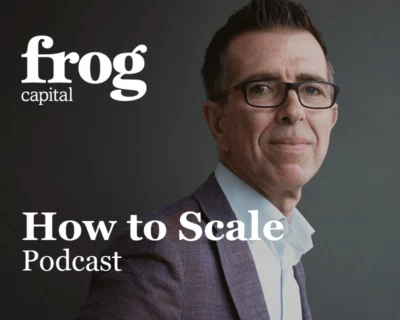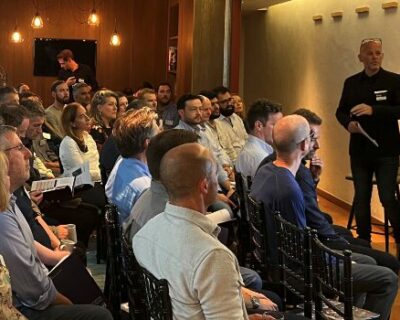You must have a clear strategy for your business and the critical messages around which you can build a full marketing and communication plan. Anything you do and decide in the future must be aligned with this decision and these messages. All external and internal communication, positioning and PR needs to be consistent with this strategy and reinforce the same messages over and over again.
As CEO, you are responsible for determining the strategy with the buy-in of the board and your team. Alignment around strategy at both board and executive level is critical to the success of the company, so why do many companies fail to execute a coherent and consistent strategy?
You can tell very easily which businesses don’t have a strategy because they change their marketing message like they change their shirts. The prime example of this was one company at a major tech conference whose booth had every buzzword that was going at the time written on it: Big Data, Block Chain, Hadoop, AI, Cloud, SON, NFV, SDN, 5G and so on. This completely defeated the point, as no one could not tell what on earth the business actually did. And, only one year earlier, the same company had totally different messaging at the same show. Consistency is critical.
But how can you set a strategy that can last for years and not for months? Your first step should be to run a successful strategy day. This will help you decide what you are going to do and, more importantly, what you are not going to do.
3 Rules for a Successful Strategy Day
The quality of strategy you come up with is dependent on the quality of people taking part, your knowledge of the market and the data you have available. Assuming you have invited the right people along to the strategy day, here is how you can make sure it doesn’t become a talking shop and that you come out of it with sound decisions on strategy for your business.
Rule #1: Get someone to moderate a strategy day who has run a successful one before
This person must have gravitas, know when to involve all of the group, know when discussions are going around in circles and know when and how to bring things to a conclusion.
Note that it’s not essential that the moderator is knowledgeable in your specific industry. In fact, one could argue it would make them a better moderator as they will not have any bias or preconceived idea what the answer should be. However, the moderator must be a seasoned operator in tech, and preferably someone who’s run strategy days before.
It is the moderator’s responsibility to manage the entire the day. From setting the agenda together with you, to ensuring everyone is back on time from breaks to making sure laptops and phones are confiscated if participants are not paying attention. He/she must also be smart enough to keep everyone focused by detecting what discussion is really critical to work through and equally what is simply minor detail or operational day-to-day.
Rule #2: You must come out of the day with concrete decisions
No procrastination is allowed. Where data doesn’t exist, use rule of thumb, gut feel, or whatever you need to make a decision. If it’s a market you know, you won’t be far wrong, and, even if you are, you can always course correct.
Rule #3: Think carefully about who you include
Only involve those who can add real value, those who have great market knowledge and/or the specific operational or technical background that is critical to the discussion. Keep the total number of attendees to no more than 8: a particularly good combination is 4-5 key executives with great market, product and customer knowledge. Your CPO, CTO, CMO, CRO are good execs to include, plus one or two knowledgeable NEDs who really know your market/customer/M&A base and can bring useful perspective to the exec team.
Getting started
At the beginning of the strategy day, it’s important to establish what horizon you are talking about. There is no point having a strategy for the next 10 years in tech. A three-year strategy and an agreement on the direction of travel beyond this should be sufficient. Strategy also very much depends on the ambition of the group, the market opportunity and the exit horizon that you would ideally like to achieve.
For example, if the executive team is very ambitious and wants to conquer the world market, becoming the #1 provider in their home market will not be a goal they wish to achieve; the strategy for a global play is very different to one in the home market. Equally, if the board has a short exit horizon (e.g. 2-3 years), then the team needs to be realistic that there is no time to develop a new product range to attack a new vertical and the focus needs to be on selling the product they have and dominating the existing sector.
Be realistic in your three-year goals and your exit valuation (if desired within the next three years). Once you have agreed on these, you will be ready to debate the strategy that will help you achieve them.
Why run a strategy day and how often?
Determining your strategy is like drawing a map of how you are going to get to your desired destination. Most executives will instinctively know what the map sort of looks like before they step into the strategy day session, so it may sometimes feel like a repeat of what you already know. Remember, even if you don’t come out with some new revelations, the act of all of you coming together to agree on the strategy creates a strong alignment in the management team and select board members who can then defend that strategy to the rest of the board. Just achieving and affirming alignment on strategy is, in itself, an important reason to run such an exercise.
The good news is that once you do one, if you’ve done a good job then the strategy should hold true and only require tweaking in future rather than a major upheaval.
What should the agenda include?
The attached toolkit is designed to be used at your strategy day as both an agenda and a worksheet. Fill in the blanks in each tab in this Strategy Workshop toolkit, working in numerical order and using the guidelines in each tab as a prompt.
In order to get diversity of thought, if you have a minimum of six people participating, split them up into two groups and get them to independently look at the themes and questions. The result will be that you and your team come away from your strategy day having a clear idea of your messaging and plans of action.












